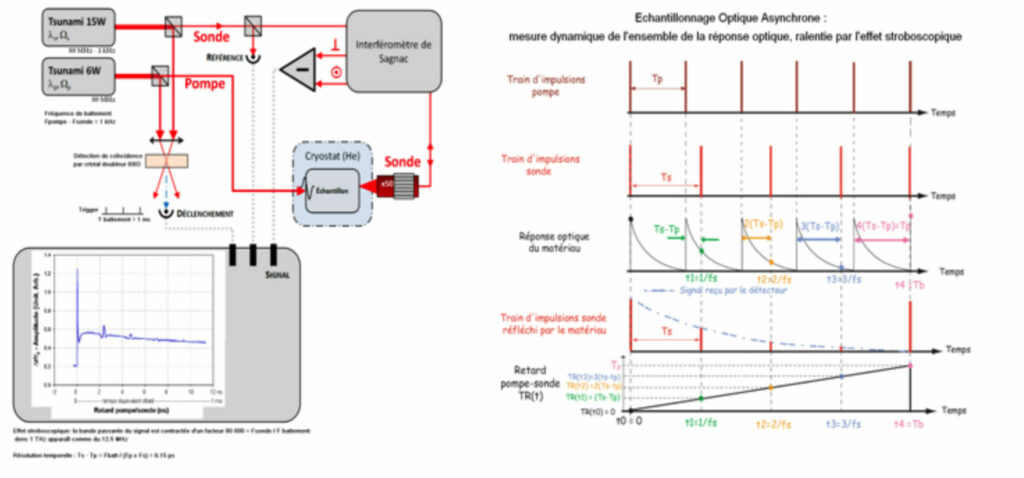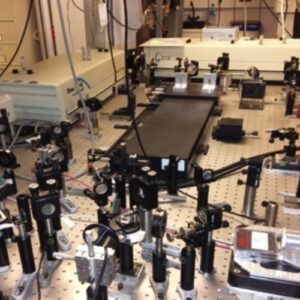List of members |
Facilities |
Internships and jobs |
PhD |
Publications |
News |
Asynchronous Optical Sampling (Real Time Stroboscopy) ASOPS
Since 2010, a new concept of pump-probe measurement has been studied and implemented on our experimental benches: Asynchronous Optical Sampling (ASOPS), which consists in using 2 lasers instead of one as in conventional pump-probe. The 2 lasers are synchronized with a small but fixed offset (1 kHz) of their repetition frequencies (80 MHz), which allows to temporally scan a measurement area by strobe effect, very quickly: at the rate of the frequency difference between the 2 lasers.

Caption:Schematic diagram of the experimental technique of picosecond acoustics, known as Asynchronous.
This technique does not use any moving mechanical stage, so the limitations inherent in conventional delay lines, even of high precision, are eliminated (vibrations, slowness and depointment of the delayed laser beam). Moreover, this technique allows the use of 2 different wavelengths for pump and probe lasers (“2-color” experiment).

Most of the pump-probe experimental benches are equipped with imaging and sound field mapping devices: high optical power and long working distance objectives (Mitutuyo and Olympus), piezoelectric translation stages (2 100µms and 1 300µms stages) or angular rotation stages (1 35mrad piezo tilt stage) allowing to move the probe beam in relation to the pump beam with a nanometric resolution, and over a field of one to several hundred microns. All the benches are also equipped with fiber optic visualization systems allowing the observation of the surfaces and structures studied.
An Olympus Model IX71 inverted microscope has recently been integrated on the sound field mapping assembly, allowing visualization of large fields for vibration studies on isolated metallic nanowires. An Olympus BXFM model has recently been implemented on the mount for real-time visualization during elasticity measurements on neural biological cells.
A variety of devices allow us to perform environmental measurements according to the samples studied: Diamond anvil for the study of materials under extreme pressure conditions, OXFORD Cryostat for the study of planar acoustic nanocavities, Furnace for the temperature study of isolated metallic nanostructures (T°C up to 1200°C).

